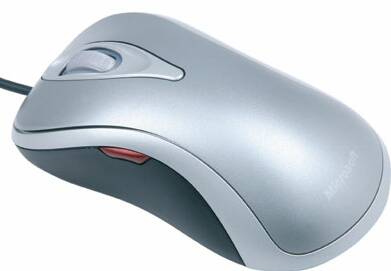The Ultimate Mouse Hunt
In Use
A lot of you will say there's no real point in pushing resolution beyond 800-1,000 dpi because beyond that, the mouse isn't really usable. However, we have discovered that with the improvement of preciseness, higher resolutions become workable.
I've been using a Razer Diamondback 1,600-dpi mouse with a 19" LCD display at a resolution of 1280x1024 for a year now. And I now use my mouse constantly at a resolution of around 1,200 dpi. It's really a matter of habit. At first, you can't control your mouse, but as time goes on you gain accuracy. Obviously with FPS games, faster reaction in movement is a considerable advantage -especially now that it's possible to change resolution on the fly. Mice have one or more buttons for making the change. Here again, it looks like an unnecessary gewgaw at first, but then you quickly get used to suiting the speed to the application. With FPS games it's especially worthwhile. As long as you're moving fast and shooting from the hip, you use the maximum speed. When you need to aim accurately, you slow down a notch. Individual preferences come into play a lot. Some people don't like a mouse that's too fast and can't control one effectively without losing productivity in FPS games or with Photoshop. Others won't like changing the reactivity of their mouse while using an application or playing a game. But the old adage holds true where mice are concerned: "If you can do more, you can do less."
Walk Before You Run
Finally, a mouse's effectiveness depends on its performance, but also just as much on its ergonomics. If a mouse's shape doesn't suit you or it's too heavy, or doesn't move smoothly due to dirty pads or a wire that gets in the way, you immediately lose all the advantages of the technology.
But at the end of the day, we're only talking about a mouse, and its performance factor falls on the low end of the totem pole among more crucial PC components and peripherals, right? My answer to that assumption is that the mouse is what provides most of the interactivity between you and your computer. It's the only link between your decisions and their taking effect in an application or game.
Scoring
From now on, the products tested on this site will be scored in the form of stars. For mice, the criteria we've chosen for determining the final score are price, ergonomics, finish, functionality and performance. Price is not scored as such but serves to put the product into a category. Obviously you can't expect the same performance from a basic mouse costing $20 as from a laser mouse costing $100. The score ranks the product within its category. Ergonomics evaluates handling, maneuverability, comfort, the placement and quality of the buttons, etc. Smart functions are a plus. Obviously, the most important criterion is still performance, about which we gave details above.
Get Tom's Hardware's best news and in-depth reviews, straight to your inbox.
-
Ephebus Stay away from this mouse. I've had two, and both started double clicking with the left button after about a year. Logitech's forums are full of topics on this issue. The latest versions of the G7 also showed a regrettable decrease in manufacturing quality - my first mouse had a rubber coating around it (release A0), while on my second G7 (release A2) it was replaced by cheap plastic. Issues with the receptor dongle losing connection with the mouse are also frequent, and Logitech will go to great lengths to avoid honoring their 3-year warranty.Reply

